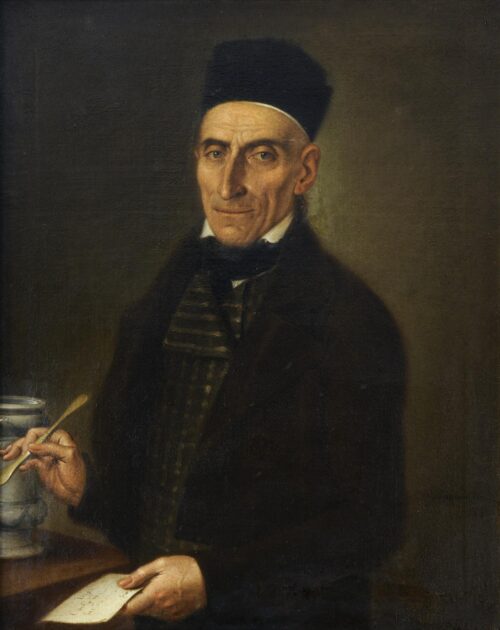
Kantounis Nikolaos (1768 - 1834)
The Pharmacist Dicopoulos, ca 1825
Son of Ioannis Kantounis, doctor, poet and writer, he trained under Ioannis Korais and, most likely, Nikolaos Koutouzis who, according to tradition, expelled him from his studio out of jealousy. In any case, he always called himself an autodidact as can be seen in an inscription on his selfportrait (National Gallery). The influence of Koutouzis is obvious both in his work and in his private life since, following Koutouzis’ example, he was ordained into the priesthood in 1788 at the church of the Evangelistria in Zakynthos. Later, as a member of the revolutionary Filiki Etaireia (“Friendly Society”) he worked for the Greek Revolution and from May to October 1821 was exiled on the island of Kyras af to Dia, near Cephalonia, where he painted The Last Supper .
His work is made up of religious compositions and portraits. The religious part included paintings in the churches of Ayioi Pantes, Ayioi Apostoloi, Our Lady of Tsourouflis, Ayia Paraskevi, the Hodegetria and Chrysopigi on Zakynthos, which have not survived. In the Zakynthos Museum there are various paintings from the church of the Virgin Pikridiotissa, Ayioi Anargyroi, Ayios Georgios of Kypriana, Episkopiani, Ayios Andreas of Avouris, Ayios Antonios of Andritsis and others, while other paintings can still be found in their original locations at the main church of the Monastery of the Virgin Platytera on Corfu and the church of Ayia Aikaterini of Sina in Zakynthos. For the rendering of these compositions he used the work of Koutouzis as his model as well as the works of the Italians and Flemish which were in wide circulation as prints during that period in the Ionian islands. His portraits were also influenced by Koutouzis, and taken together these two can be considered the founders of secular painting, portraiture in particular.

The Pharmacist Dicopoulos, ca 1825
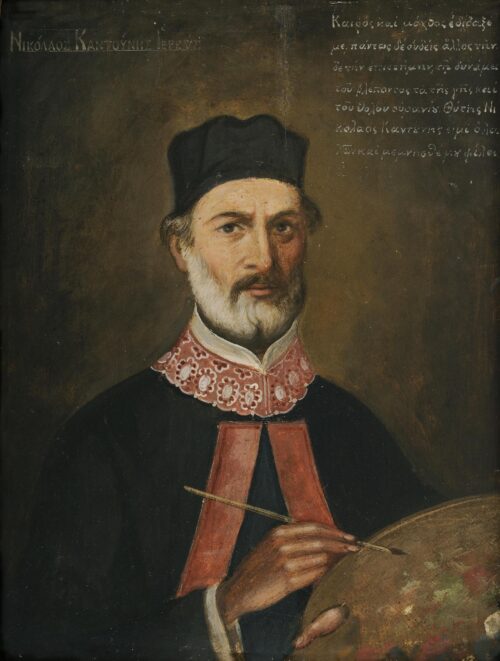
Kantounis with his Palette
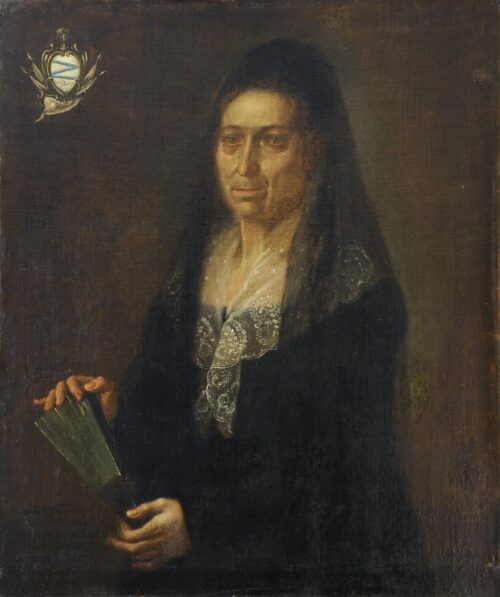
The Lady with the Black Veil, 1819
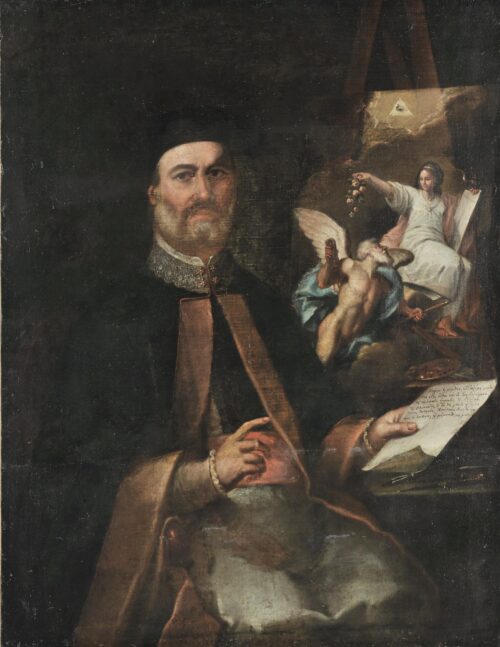
Self-Portrait, ca 1820
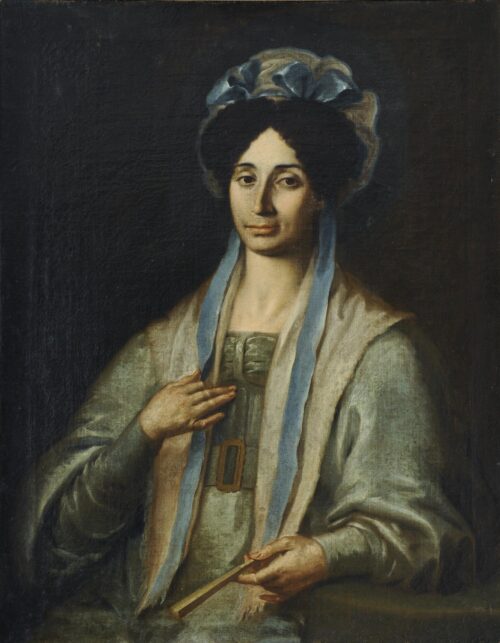
Elisabeth Moutzan-Martinegko, ca 1832
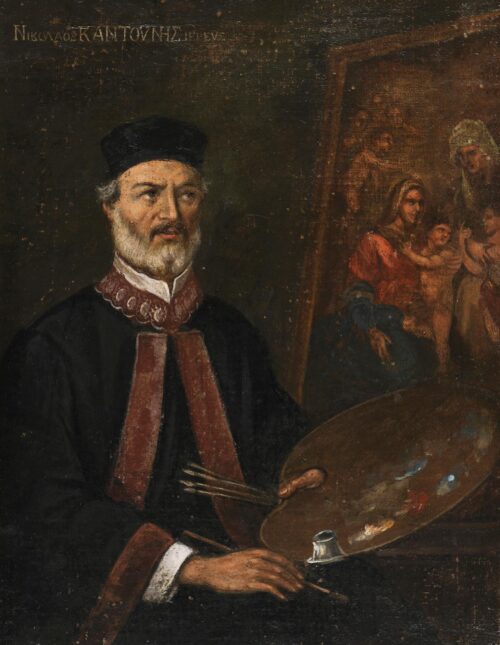
Self-Portrait of the Artist Painting a Religious Scene
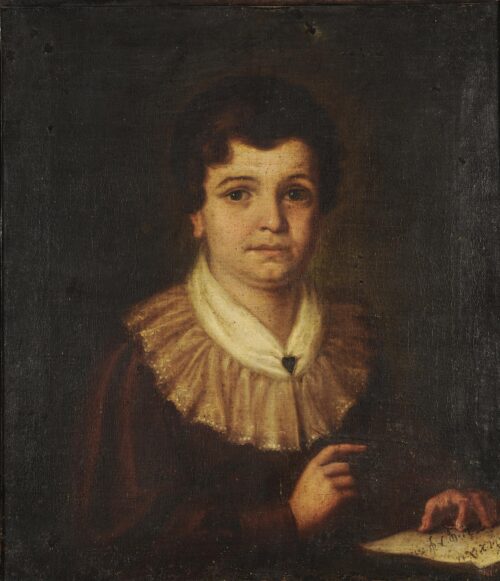
Portrait of a Child Learning the Alphabet from a Piece of Paper
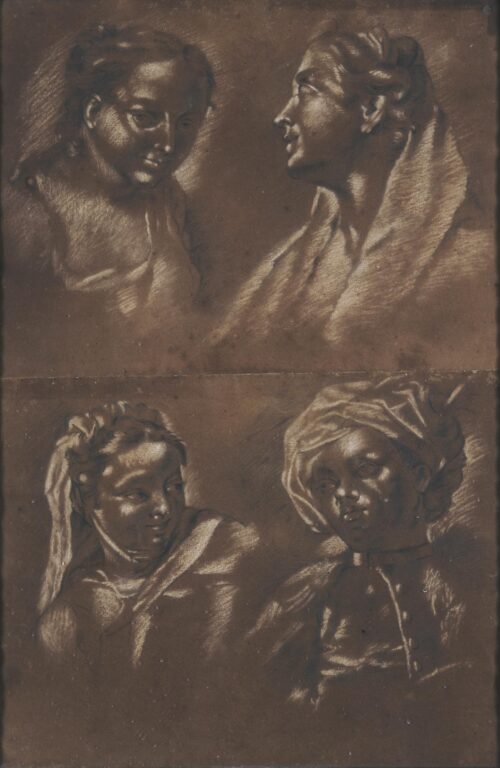
Four drawings of heads
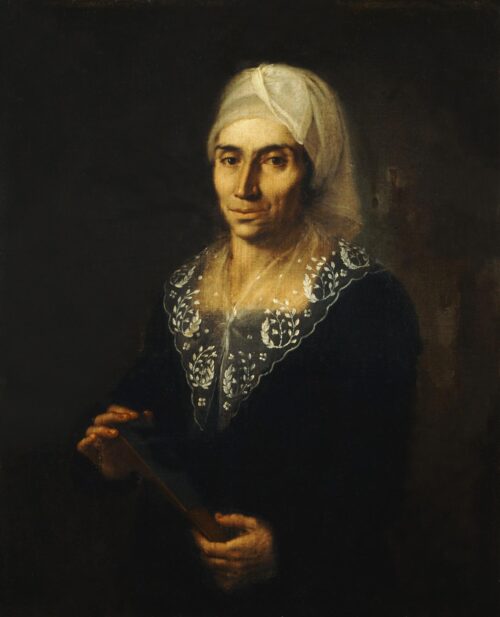
Portrait of Ioannis Plessas’ Wife

We use cookies to make our site work properly, to personalize content and ads, to provide social media features and to analyze our traffic. We also share information about how you use our site with our social media, advertising and analytics partners. Read the Cookies Policy.
These cookies are necessary for the website to function and cannot be switched off in our systems. They are usually only set in response to actions made by you which amount to a request for services, such as setting your privacy preferences, logging in or filling in forms. You can set your browser to block or alert you about these cookies, but some parts of the site will not then work. These cookies do not store any personally identifiable information.
If you disable this cookie, we will not be able to save your preferences. This means that every time you visit this website you will need to enable or disable cookies again.
These cookies tell us about how you use the site and they help us to make it better. For example these cookies count the number of visitors to our website and see how visitors move around when they are using it. This helps us to improve the way our site works, for example, by ensuring that users find what they are looking for easily. Our website uses Google Analytics for statistics reporting.
Please enable Strictly Necessary Cookies first so that we can save your preferences!